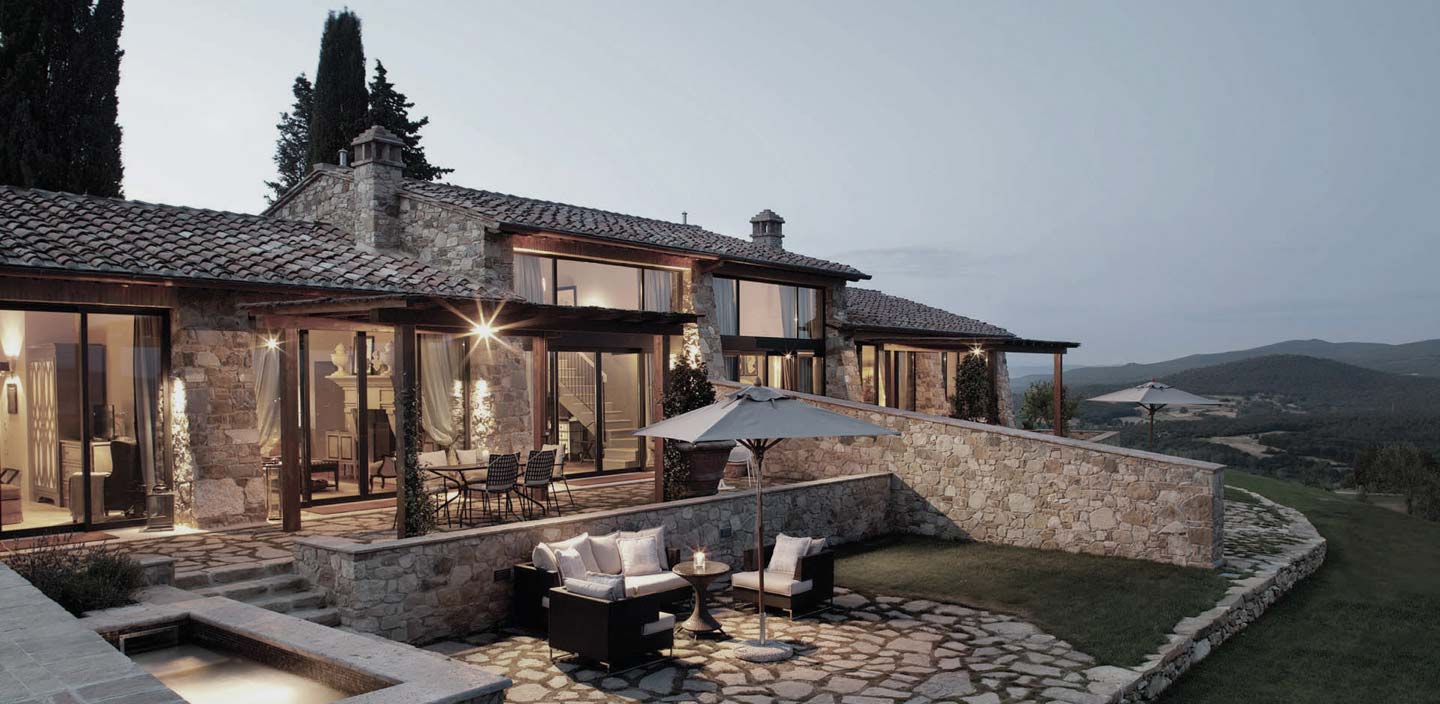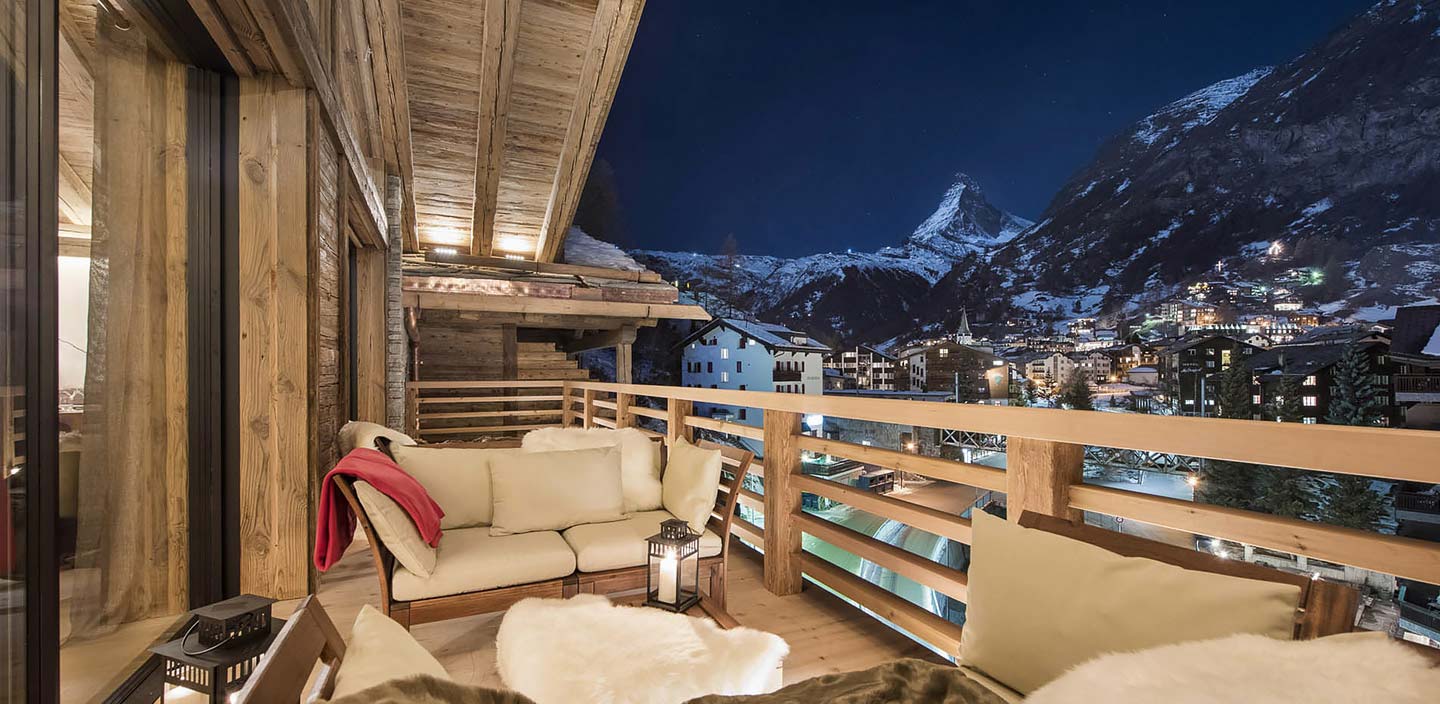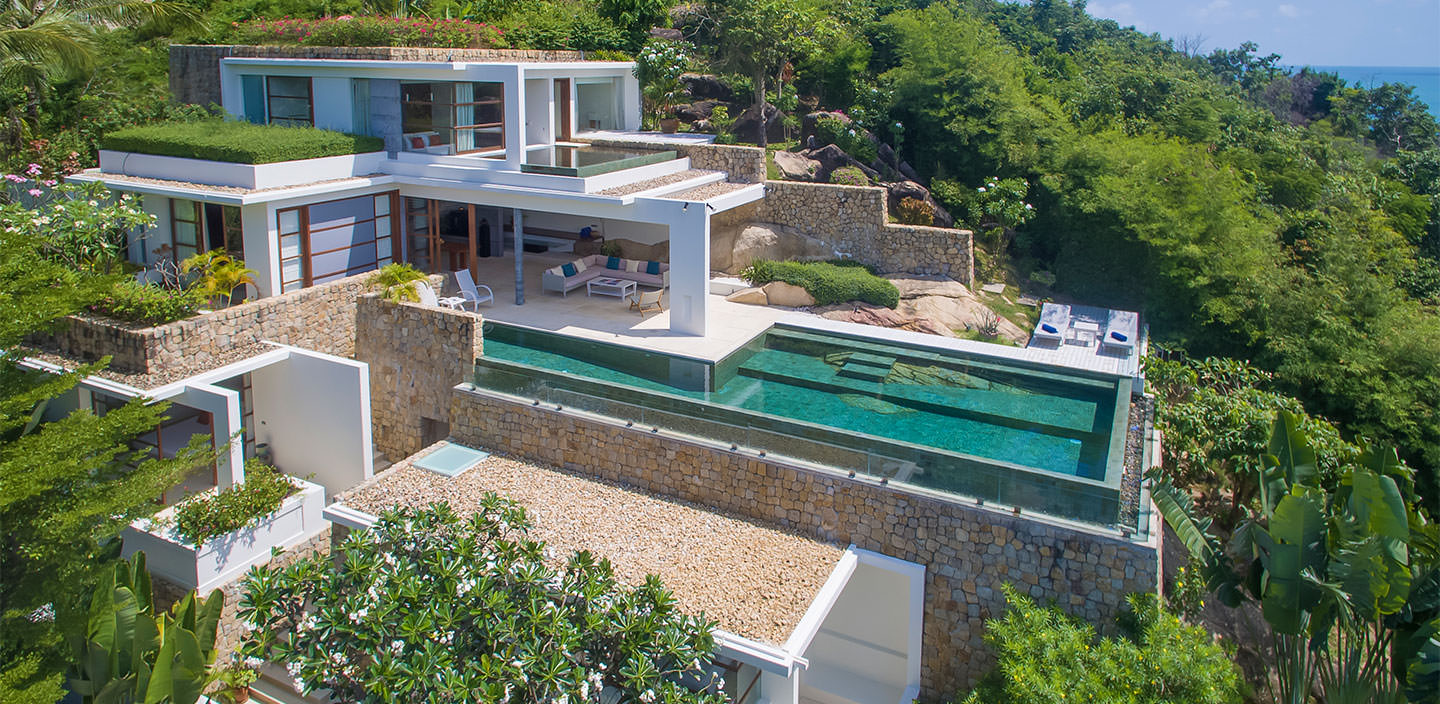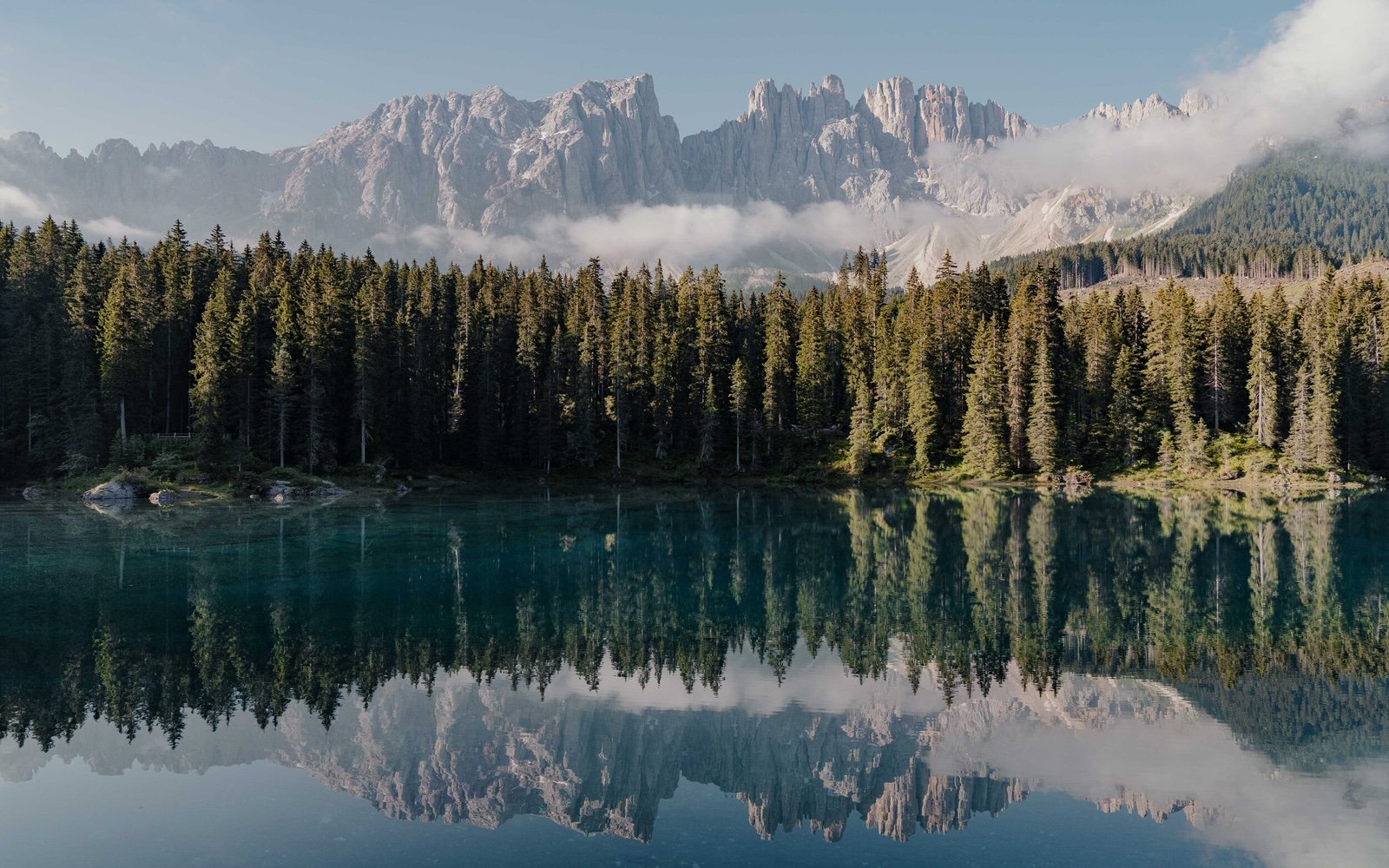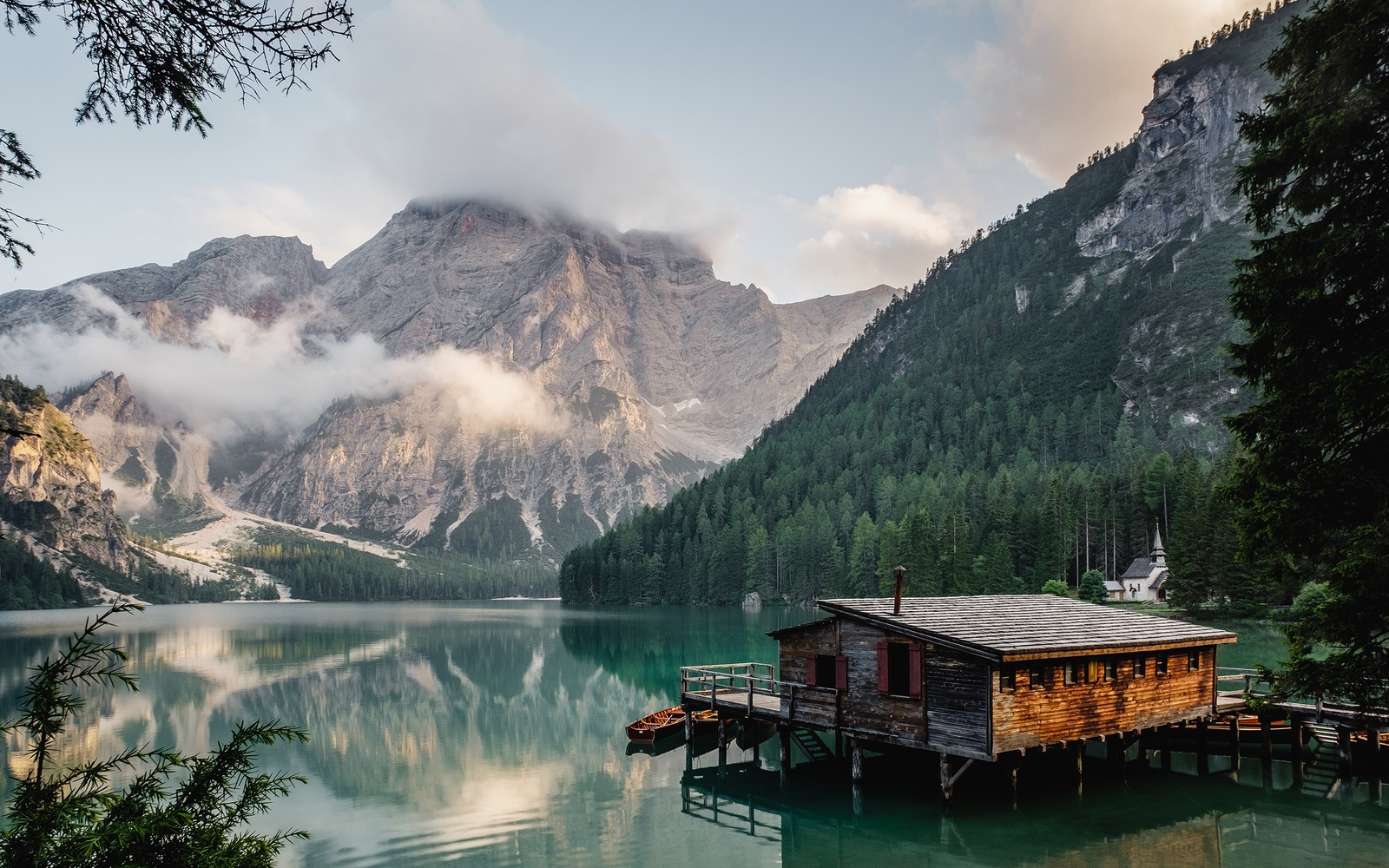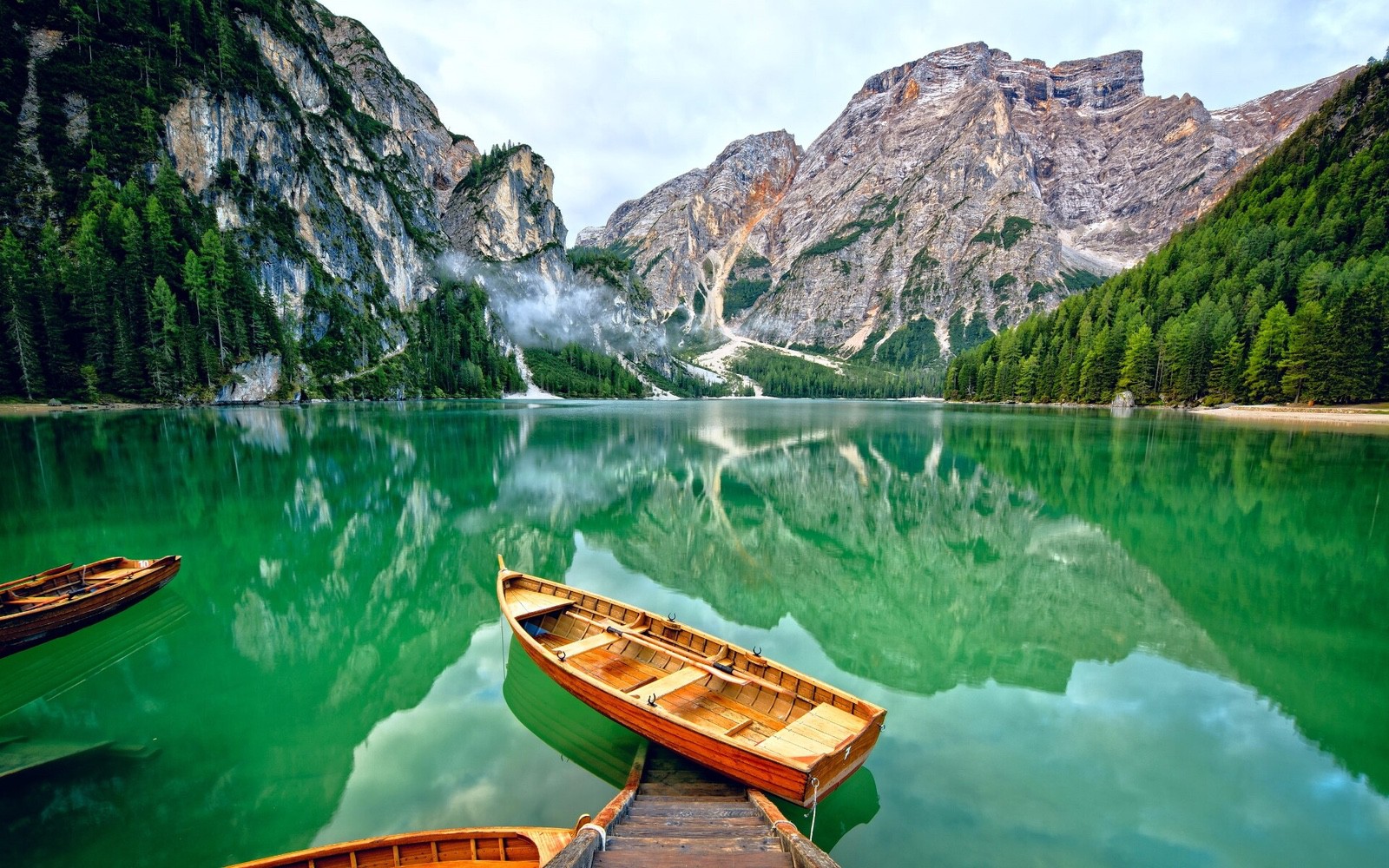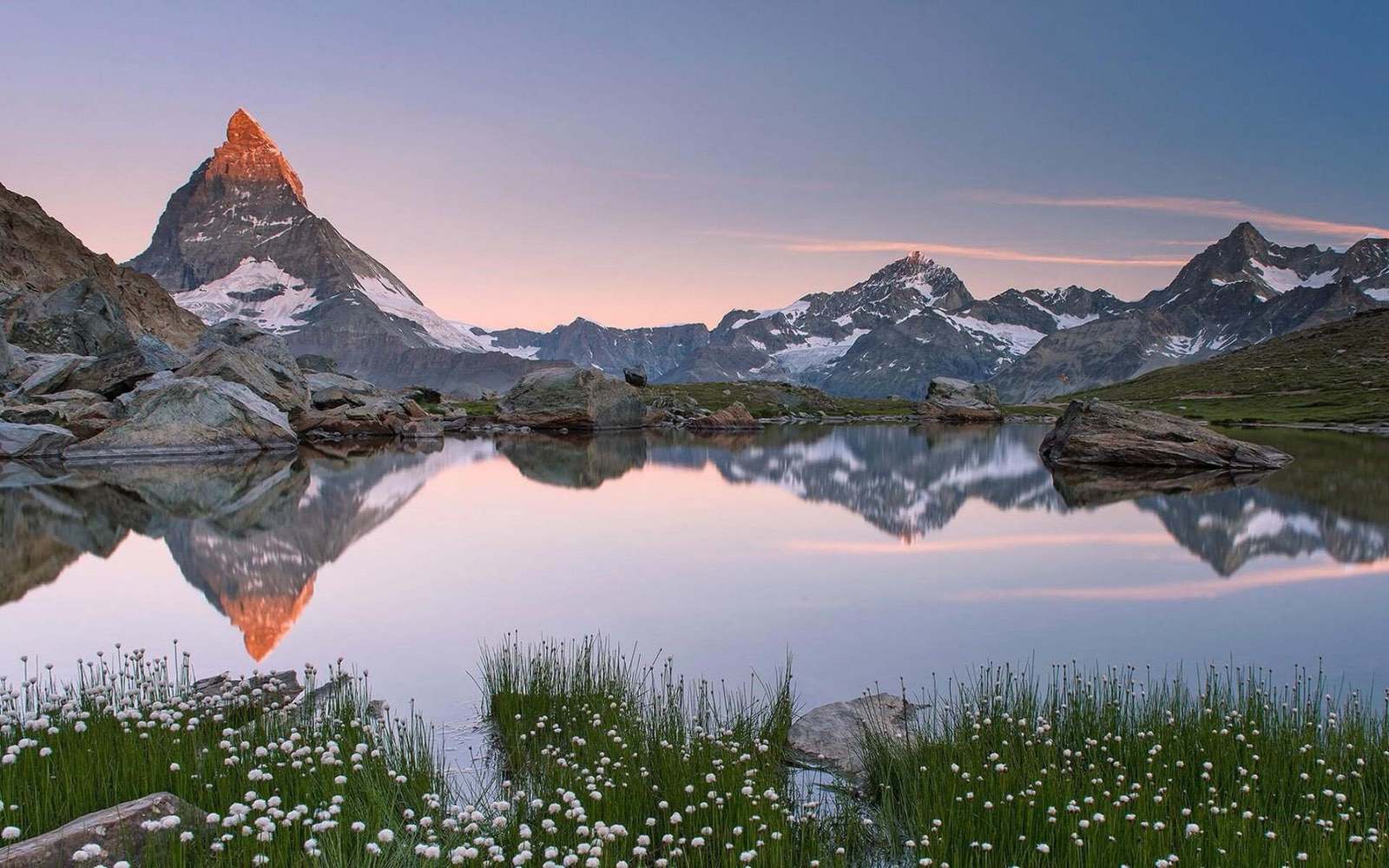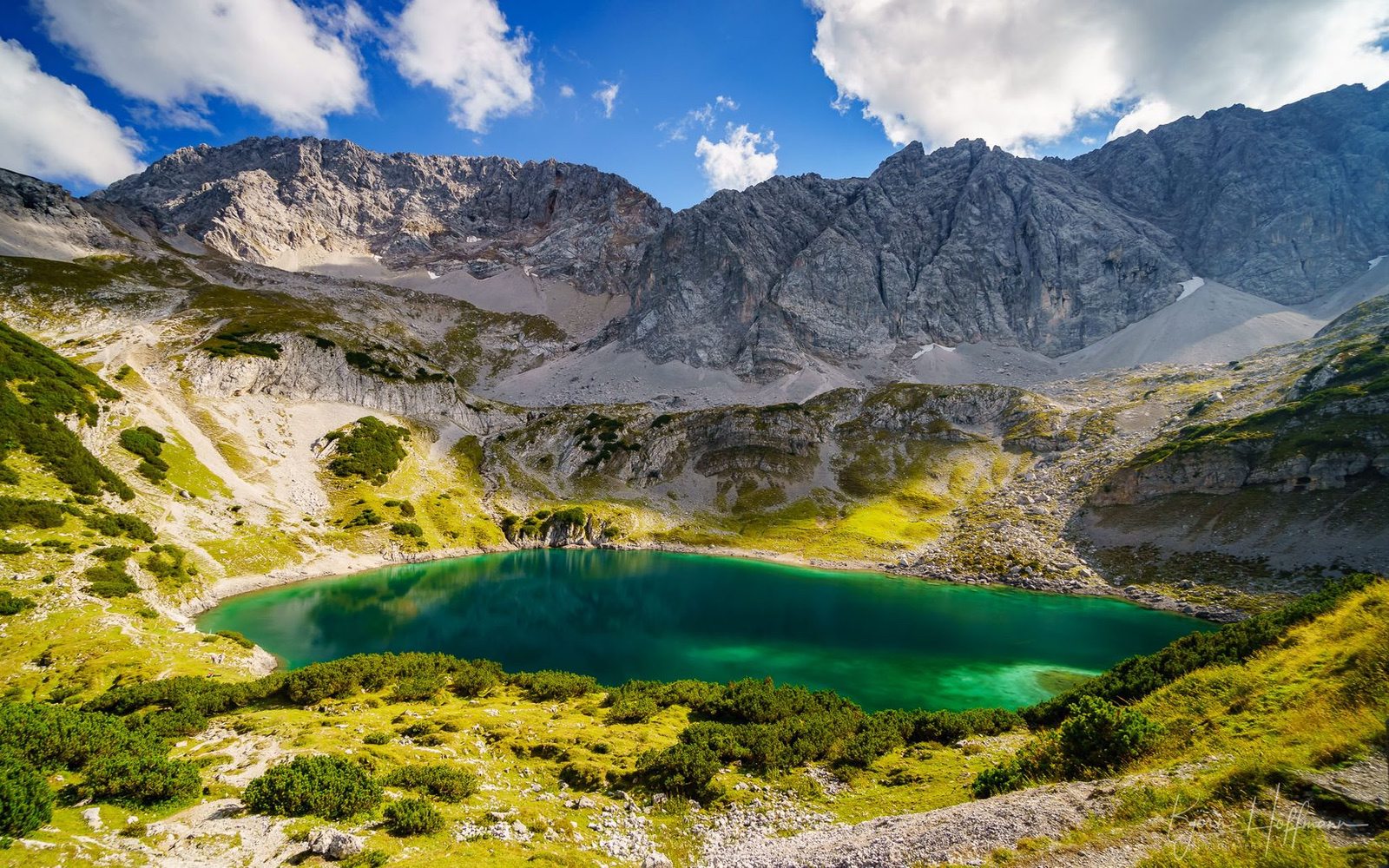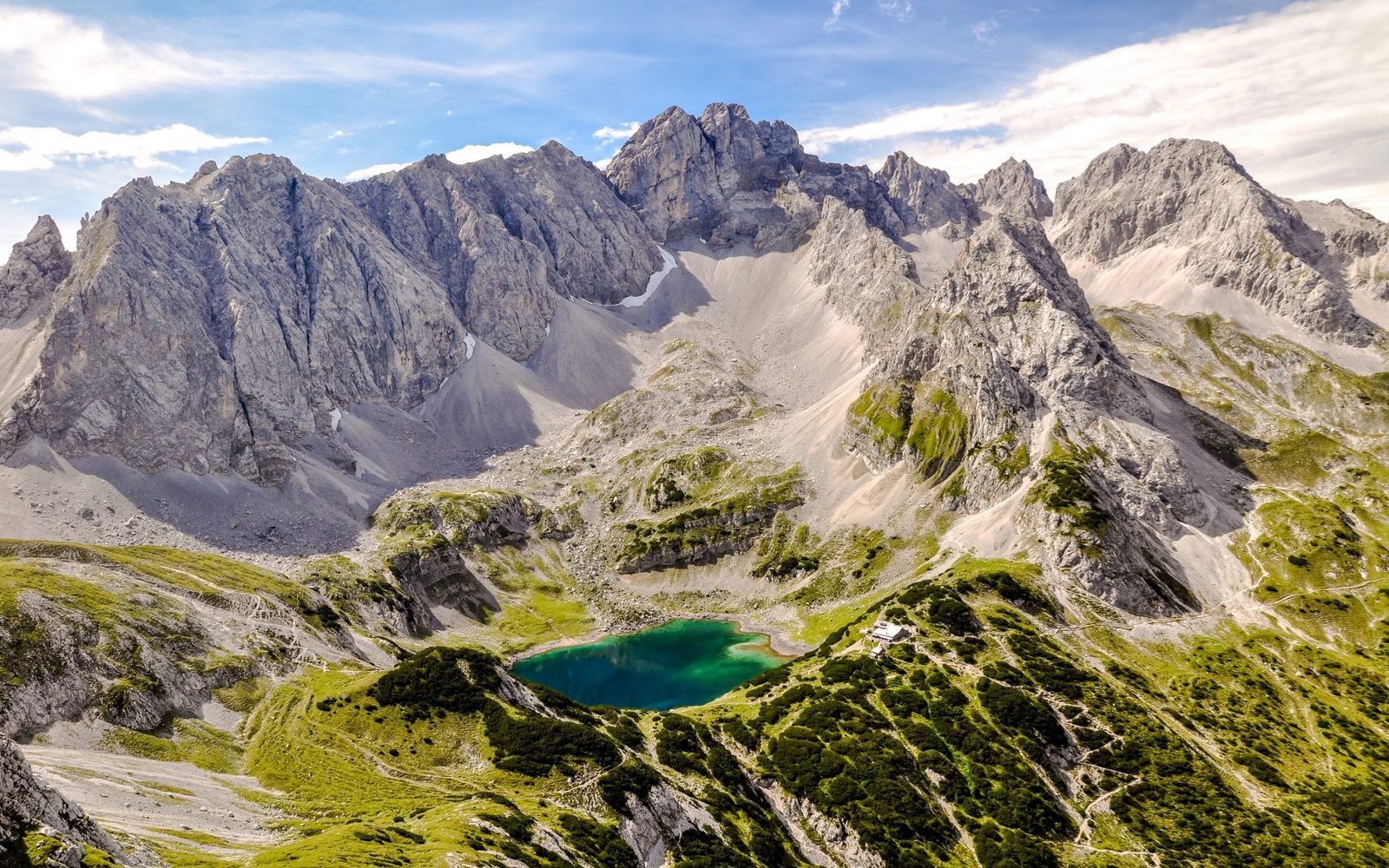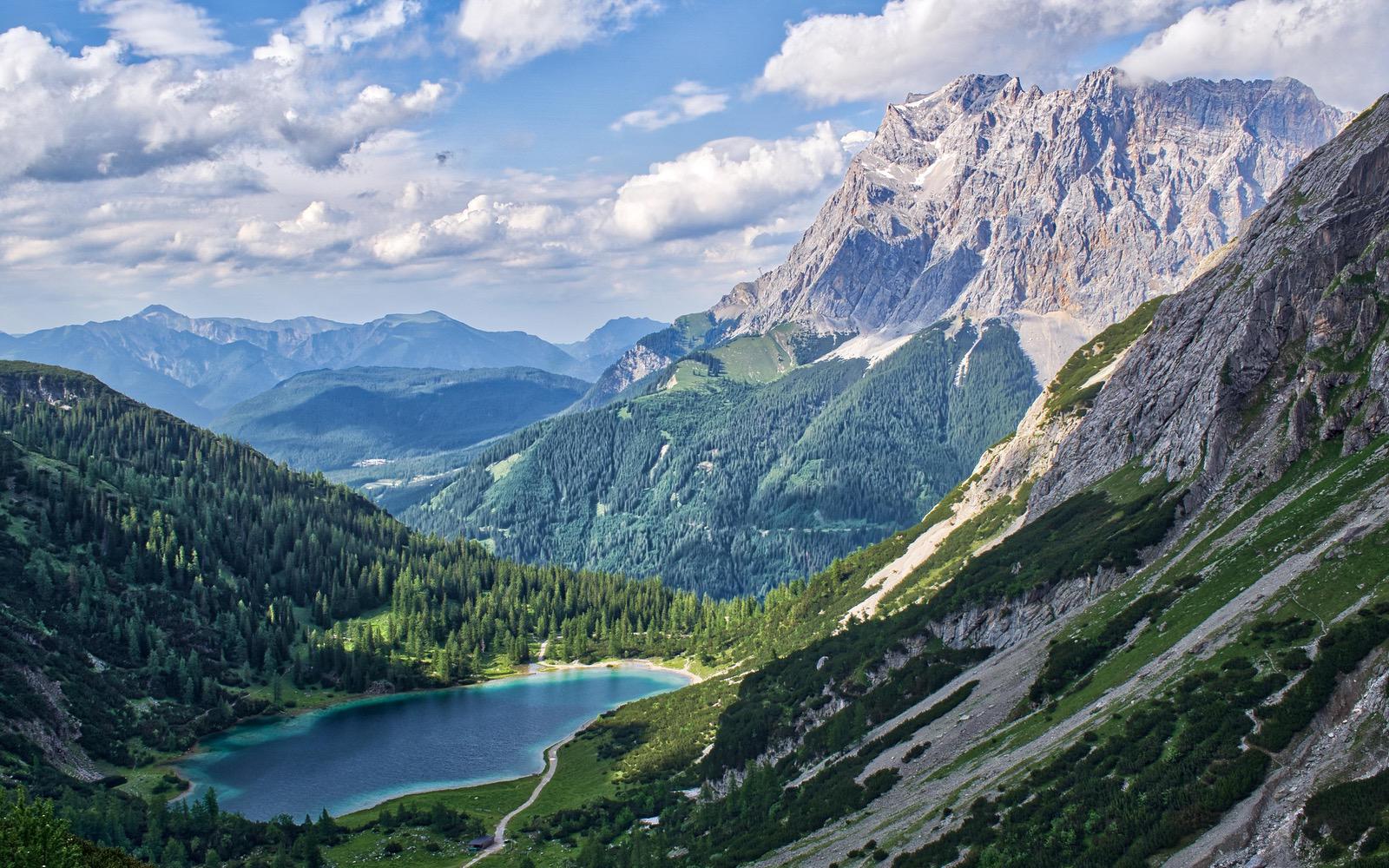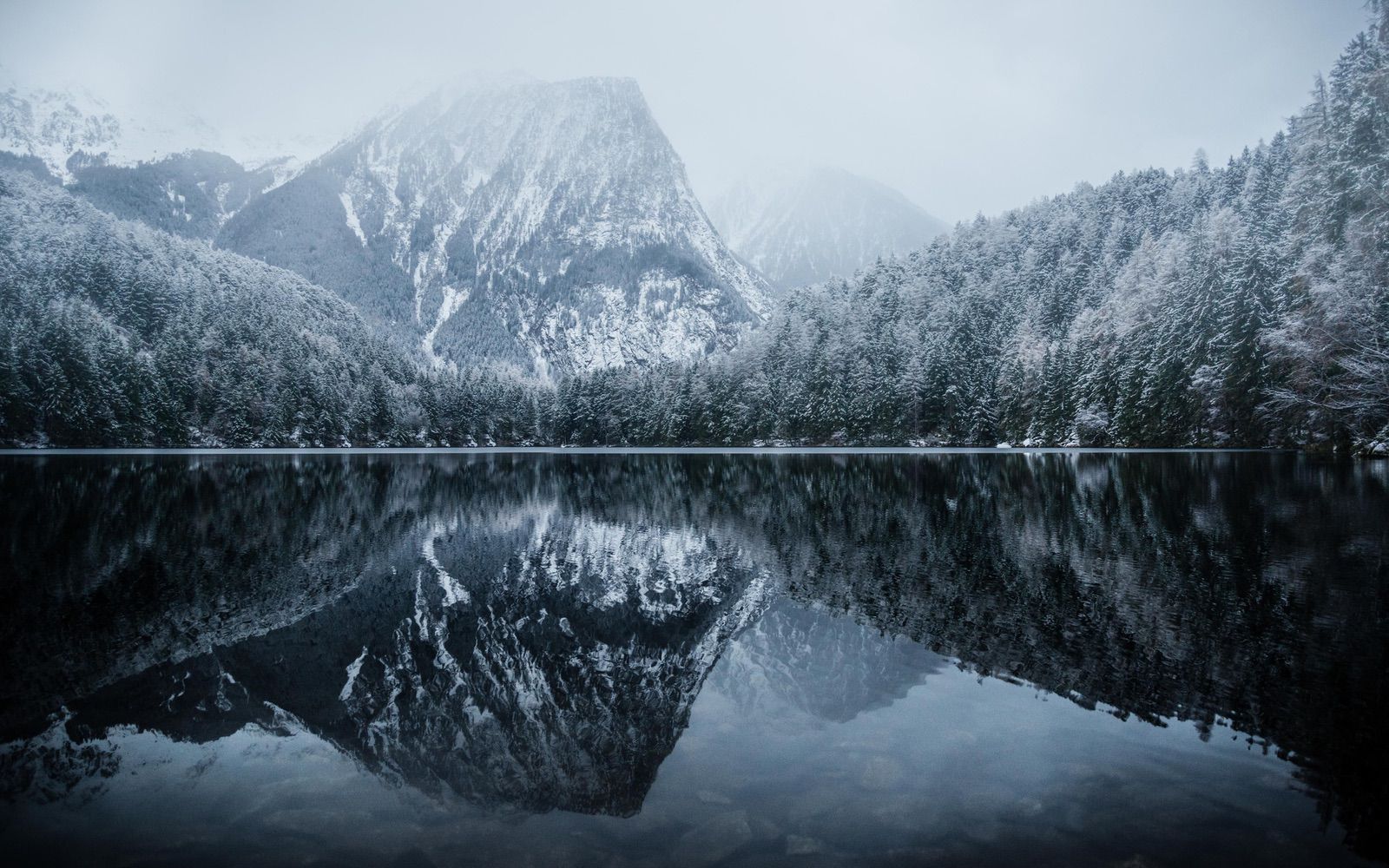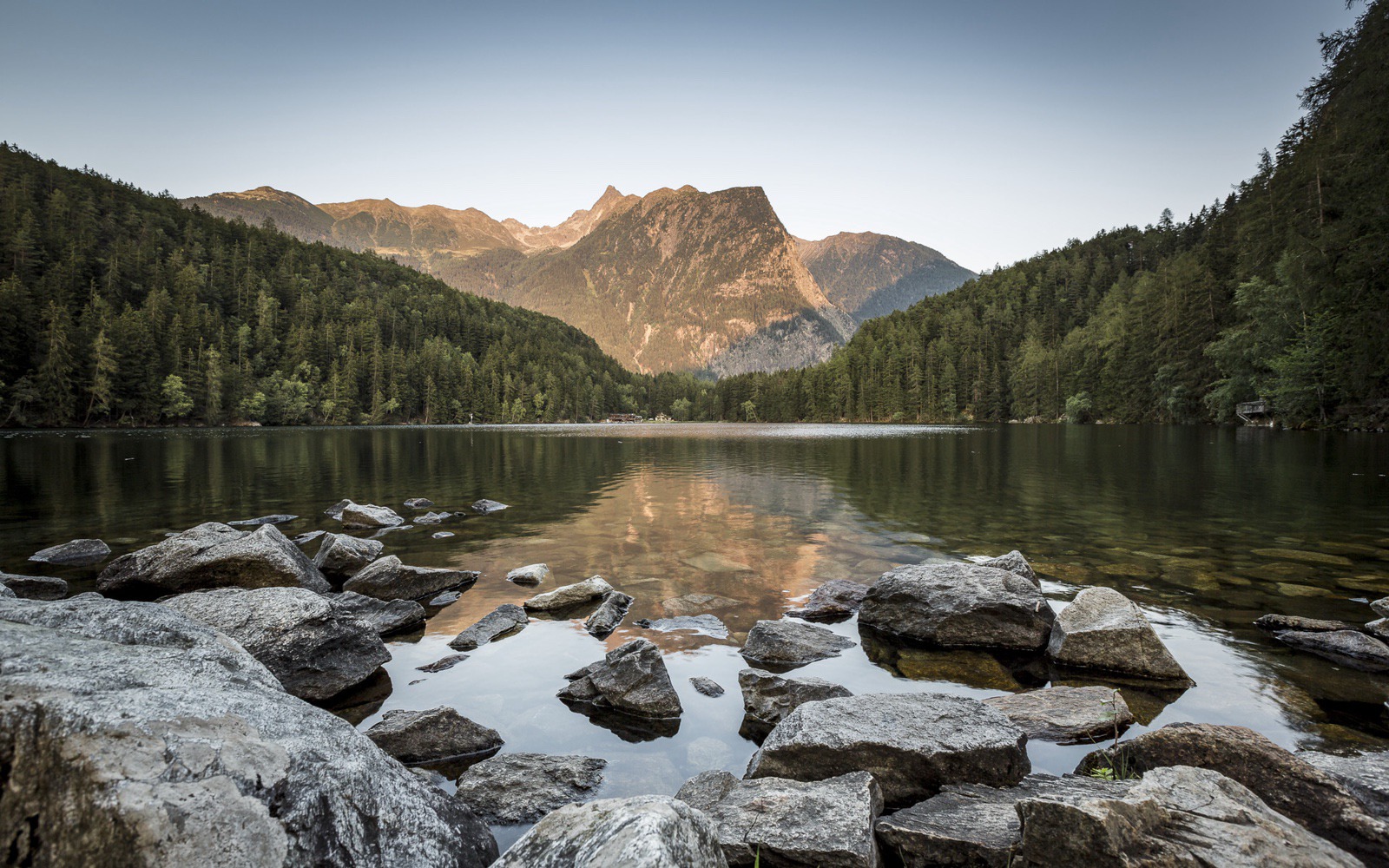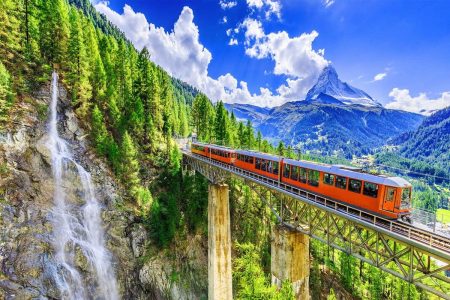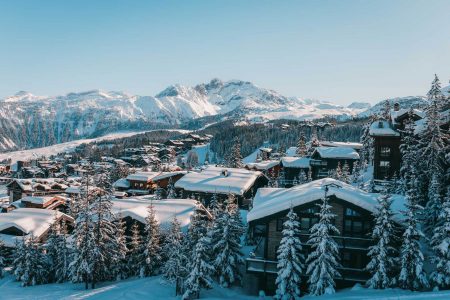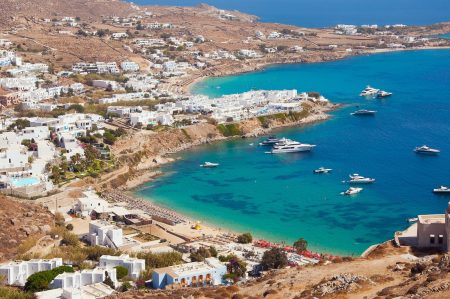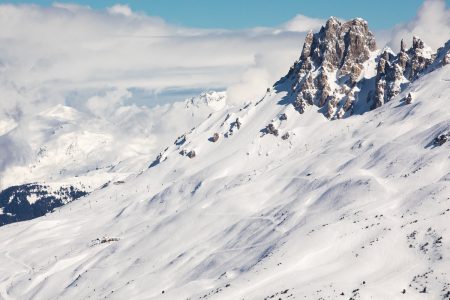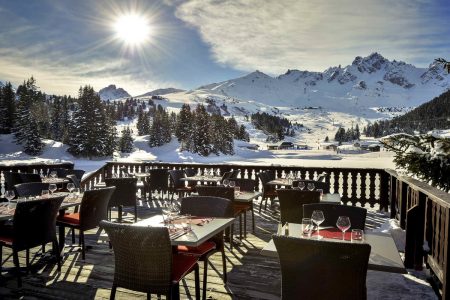Get ready to discover the enchanting allure of nature as we introduce a curated selection of the most mesmerizing lakes nestled in the heart of the Alps.
1. Lake Carezza | Italy
In the enchanting Dolomites, every mountain lake boasts breathtaking beauty, yet one stands out as truly mesmerizing. Nestled in the upper Val d’Ega Lago di Carezza, with its captivating rainbow-hued waters, weaves a spell that even the stout-hearted Winston Churchill couldn’t resist. During his summer vacation in 1949, Churchill, accompanied by his wife, was so entranced by the lake that he hastily made his way to the shore, compelled to immortalize its beauty on canvas. Despite being the smallest among the Dolomites’ popular lakes, spanning a mere 9 acres (equivalent to 8 football fields), Lago di Carezza surprises with its unexpected depth (17 meters). Known by the poetic names “Lec de Ergobando” or “Rainbow Lake,” Lago di Carezza is not just a visual marvel but also the protagonist of a fairy tale. Legend has it that a mermaid once dwelled in its depths, capturing the heart of the enamored wizard Masaré. Seeking to win her over, he followed the advice of the witch Lanwerda, attempting to woo her by tossing a rainbow between Mt Catinaccio and Mt Latemar. However, his oversight in forgetting to disguise himself as a jewel merchant led to the mermaid’s realization of his true identity, prompting her disappearance into the lake. Undeterred, the wizard cast the rainbow and all his jewels into the lake, resulting in the enduringly vibrant colors that grace its waters to this day.
2. Lake Sorapis | Italy
For an incredible trekking experience, explore Lake Sorapis in the Italian Dolomites. Its hiking route is considered one of the most beautiful in Northern Italy. Starting at Passo Tre Croci, the 12 km route progressively challenges with slippery paths, waterfalls, and rocky stairways, offering panoramic Dolomite views and glimpses of World War One caves. Situated at 2,000 meters above sea level, the lake itself is renowned for its intense colors, ranging from blue to aquamarine, attributed to the extremely fine rock dust carried by the glacier of the same name. This process comes to life with the snowmelt in spring and summer. If you’re seeking a challenging yet inspiring trip, Lake Sorapis truly is heaven on Earth.
3. Lake Braies | Italy
Lake Braies, often called the “Pearl of the Dolomites” or Pragser Wildsee in German, stands out as a true gem in the natural beauty of Northern Italy. Located at an elevation of around 1,500 meters above sea level, this mountain lake attracts visitors with its mesmerizing turquoise-green waters and the majestic Seekofel massif (2,810 m) as a backdrop. Not only is it among South Tyrol’s most beautiful lakes, but it also ranks as one of the deepest. The lake reaches about 36 m at its deepest point, with an average depth of around 17 m. The origin of Lake Braies in Italy dates back to a dramatic collapse of colossal rock formations, shaping the valley at its narrowest point. This event led to the formation of Lake Braies, recognized as a damming lake with no visible outflow. The water quietly flows underground at the lowest point, reappearing much farther down in the valley. Legend tells a different story, attributing the lake’s creation to savages mining for gold. Supposedly, when shepherds tried to steal the treasures, the savages opened underground springs, submerging the riches in the newly formed lake. The “Pearl of the Dolomites” is perfect for a leisurely stroll along the lakeside, thanks to a path that circles the entire lake. For those seeking higher adventures, several hiking tours start from the lake, including the Dolomite high path n° 1. Additionally, you can enjoy a boat tour on the lake, though only the most daring take the plunge into its refreshing waters (even during summer the temperature doesn’t exceed 15 degrees).
4. Lake Riffelsee | Switzerland
Discover the beauty of Riffelsee lake, a captivating spot with the legendary mirror-image of the Matterhorn. Situated at an elevation of 2,770 meters in the heart of a regional nature reserve, Riffelsee is a must-visit for every Zermatt enthusiast. The flawless reflection of the iconic peak on the calm lake’s surface is a popular choice for smartphone wallpapers. For the best photo opportunities, visit during dawn or dusk when the wind subsides, creating a clear and stunning reflection. Conveniently located just a 10-minute walk from Rotenboden station, Riffelsee offers a serene escape. Behind this renowned lake lies a second, slightly smaller body of water, attracting fewer visitors. The tranquil banks of this lake provide an ideal setting for a short break or a peaceful picnic. With its easy accessibility, Lake Riffel makes for a perfect family excursion, offering a blend of natural beauty and recreational opportunities in the mesmerizing landscape of Zermatt.
5&6. Seebensee and Drachensee Lakes | Austria
Seebensee Lake and Drachensee Lake stand out as two of the most beautiful high mountain lakes in Tyrol. The journey to these stunning lakes is considered one of the best hikes in Austria and an excellent day trip from Munich. The shiny emerald-blue Seebensee Lake, nestled at an altitude of 1,657 meters (5,436 ft), is surrounded by breathtaking mountains. For an even more spectacular view, hikers can continue their trek from Seebensee to reach Drachensee Lake, situated at about 1,874 meters (6,148 ft). Embarking on the hike from the picturesque town of Ehrwald, located on the German border, is convenient. The trailhead at Ehrwalder Alm is easily accessible, and you can reach it by taking the Ehrwalder Almbahn cable car. Both lakes reward hikers with crystal-clear, teal waters framed by rugged limestone peaks and lush mountain landscapes. To complete the entire hike, including the ascent to Drachensee and a visit to the Coburger Hütte mountain hut, plan to spend at least 5-6 hours on the trail. The overall distance of the hike varies based on the route chosen, generally covering around 12 to 15 kilometers.
7. Lake Piburger See | Austria
Lake Piburger See, often described as “idyllic,” sits above Oetz in a small valley. Its crystal-clear green water beautifully reflects the surrounding forests and the mighty Acherkogel peak, making it a haven for nature explorers, hikers, and swimmers. Recognized as one of Tirol’s oldest nature preserves since 1929, the lake holds historical significance. Originating from a massive rockfall after the Ice Age, Lake Piburger See stands out as one of the warmest mountain lakes in Tyrol, reaching temperatures up to 24 degrees Celsius despite its 915-meter altitude. Its healing properties were once believed to be so potent that physicians prescribed “bathing days.” Legends surrounding the lake recount a farmstead punished for its inhabitants’ outrage, submerged and transformed into the lake. Some stories even include a dragon raging in its waters. Visitors can enjoy lakeside amenities, including a restaurant with boat rental and a bathing establishment. Fishing enthusiasts can obtain a fishing ticket at the Oetz town hall, allowing fishing between May and October. In winter, Lake Piburg remains popular, offering 20 km of winter paths and the exciting Piburg toboggan run for those seeking a special adventure.
